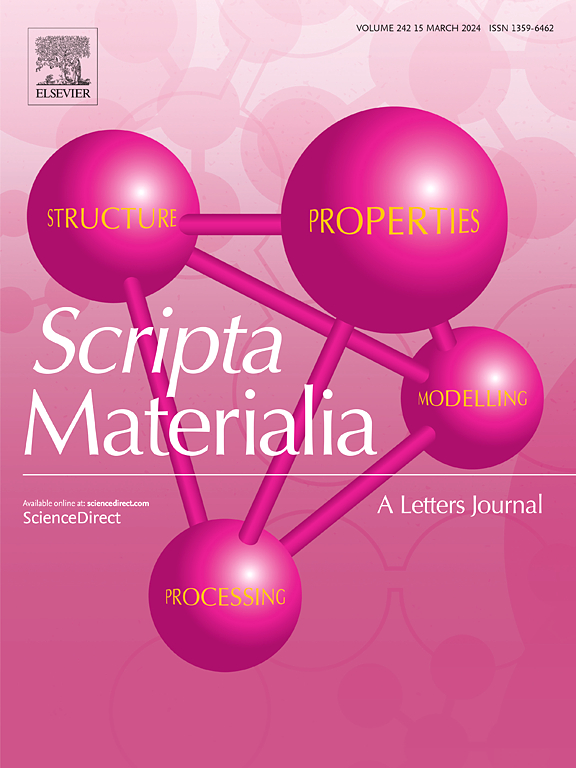SLIDE: Automated identification and quantification of grain boundary sliding and opening in 3D
IF 5.6
2区 材料科学
Q2 MATERIALS SCIENCE, MULTIDISCIPLINARY
引用次数: 0
Abstract
Grain Boundary (GB) deformation mechanisms such as Sliding (GBS) and Opening (GBO) are prevalent in alloys at high homologous temperatures but are hard to capture quantitatively. We propose an automated procedure to quantify 3D GB deformations at the nanoscale, using a combination of precisely aligned Digital Image Correlation (DIC), electron backscatter diffraction, optical profilometry, and in-beam secondary electron maps. The framework, named Sliding identification by Local Integration of Displacements across Edges (SLIDE), (i) distinguishes GBS from GBO, (ii) computes the datapoint-wise measured in-plane displacement gradient tensor (from DIC), (iii) projects this data onto the theoretical GBS tensor to reject near-GB plasticity/elasticity/noise, and (iv) adds the out-of-plane step from optical profilometry to yield the local 3D GBS/GBO vector; automatically repeated for each ∼50 nm-long GB segment. SLIDE is validated on a virtual experiment of discrete 3D sliding, and successfully applied to Zn-coated steel experiments, yielding quantitative GBS/GBO activity maps.

SLIDE:在三维中自动识别和定量晶界滑动和打开
晶界(GB)变形机制,如滑动(GBS)和打开(GBO)在高温合金中普遍存在,但难以定量捕获。我们提出了一种在纳米尺度上量化3D GB变形的自动化程序,使用精确对准的数字图像相关(DIC),电子背散射衍射,光学轮廓术和光束内二次电子图的组合。该框架名为滑动识别,通过局部边界位移积分(SLIDE), (i)区分GBS和GBO, (ii)计算逐点测量的面内位移梯度张量(来自DIC), (iii)将这些数据投影到理论GBS张量上,以排除接近gb的塑性/弹性/噪声,(iv)添加光学轮廓术的面外步骤,以产生局部3D GBS/GBO矢量;自动重复每个~ 50nm长的GB段。在离散三维滑动虚拟实验中对SLIDE进行了验证,并成功应用于镀锌钢实验,得到了定量的GBS/GBO活度图。
本文章由计算机程序翻译,如有差异,请以英文原文为准。
求助全文
约1分钟内获得全文
求助全文
来源期刊

Scripta Materialia
工程技术-材料科学:综合
CiteScore
11.40
自引率
5.00%
发文量
581
审稿时长
34 days
期刊介绍:
Scripta Materialia is a LETTERS journal of Acta Materialia, providing a forum for the rapid publication of short communications on the relationship between the structure and the properties of inorganic materials. The emphasis is on originality rather than incremental research. Short reports on the development of materials with novel or substantially improved properties are also welcomed. Emphasis is on either the functional or mechanical behavior of metals, ceramics and semiconductors at all length scales.
 求助内容:
求助内容: 应助结果提醒方式:
应助结果提醒方式:


